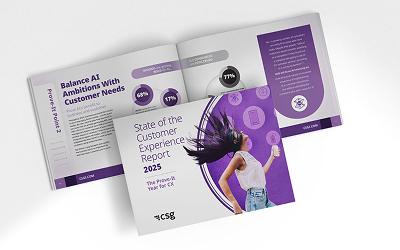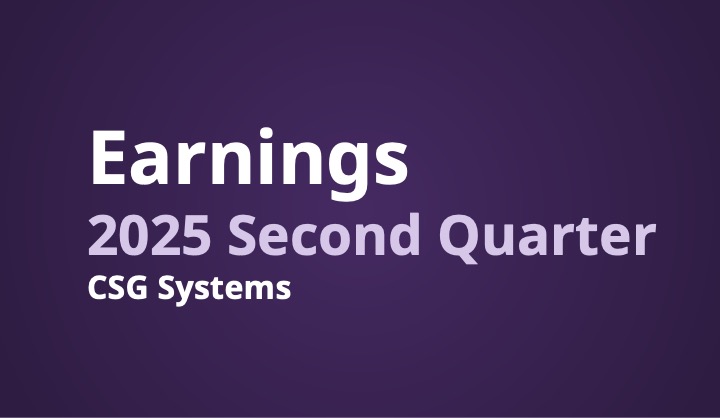Many businesses are relying on customer relationship management (CRM) software to support customer interactions and handle customer data. Among the customer engagement solutions (CES) that CX leaders are using, CRM is the most common at 70%, according to a commissioned survey conducted by Forrester Consulting on behalf of CSG. However, journey orchestration platforms are seeing increasing adoption (employed by 41% of CES users in the same survey) as leaders recognize the need for more comprehensive, automated CX tools.
A key component of enterprise IT environments, CRM systems store customer data, including contact/demographic information, purchase records, customer service tickets, and details of consumed products and services. While helpful to sales/marketing and customer service teams, CRM systems have limited ability to support the increasing demands for holistic, automated multi-channel customer experiences.
CRM’s Constraints as a Customer Engagement Solution
Today’s CRM systems have gaps in their ability to address customer engagement requirements in today’s environment.
They can’t make use of ALL the data at hand
CRM systems do reasonably well at executing business logic for data that is contained within the CRM system itself. But there are increasing opportunities to connect/link data across the enterprise environment to gain insights and drive CX actions. Unfortunately, CRM systems can’t cross multiple data sets and multiple systems of record and engagement for this purpose.
They carry out rigid, standardized, script-based actions
CRM systems can handle a range of customer interaction scenarios, but these are based on somewhat inflexible scripted workflows and point-in-time actions, which don’t fully utilize and connect the context across steps of the customer journey. CRM systems lack real-time decisioning capability to process an array of events or triggers, which is necessary to drive real-time, proactive and personalized actions.
They focus on narrow customer touchpoints
CRM systems are effective in supporting live interactions between contact center agents and customers. They also enable some elements of digital and self-service engagement. However, they cannot solve for the intensified fragmentation and gaps in communication that occur as customers engage across a wider range of touchpoints spanning voice, web, mobile app, SMS, MMS, email, kiosks, POS and more.
How Do You Fill the Gaps Left by CRM Systems?
Businesses should deploy journey management solutions alongside CRM systems to boost customer experiences with better insights, actions and communication.
Customer journey management involves the use of real-time customer data at the individual customer level to analyze current behavior, predict future behavior, and adjust the journey in the moment to produce greater customer lifetime value. With a comprehensive customer journey management solution, organizations see improved operational efficiencies and better business outcomes. A journey-focused (not process-focused) tool guides customers through all their interactions—from researching products and services to purchasing and managing them.
Effective journey management covers the following key steps:
- Insight—Listen to signals based on customer data and behavior across systems and channels, maintaining an updated, contextual profile for each customer.
- Action—Interpret signals continuously, using decisioning logic and rules to evaluate the need for intervention and, if so, determine the best next actions.
- Contact—Engage with timely and relevant messages across all channels, personalized to each customer’s journey and communication preferences.
After acknowledging that a CRM system is only one piece of the CX puzzle, businesses need to examine the other customer engagement capabilities within their tech stacks. For example, can their current systems:
- Create and maintain a comprehensive and actionable customer profile (spanning interactions across departments and communication channels) to use for real-time decision making?
- Segment customers in real time based on behavioral and other customer attributes?
- Analyze channel performance, identify pain points, and track customer behaviors and patterns across channels?
- Identify and measure business metrics (e.g., conversion rate) and track the performance of CX tools against those metrics?
While businesses may not immediately know the answers to these questions, they can start with an audit of their CX capabilities to pinpoint areas for improvement and establish a common understanding of customer journeys.
We do this for our customers—we take them through CSG’s CX Maturity Model Assessment (part of our CSG Xponent Ignite offering) to help them identify areas of opportunity where they could do something to improve customer journeys and related business outcomes. We then follow up with an ROI analysis that helps zero in on what the business should do. And finally, we have prebuilt journeys and connectors in the Xponent platform to help businesses quickly improve and orchestrate their specific short-list journeys to deliver better experiences to their customers
Xponent Ignite is an end-to-end customer journey management solution that can help businesses supercharge their CX outcomes. Contact us today to learn more about Xponent Ignite.










